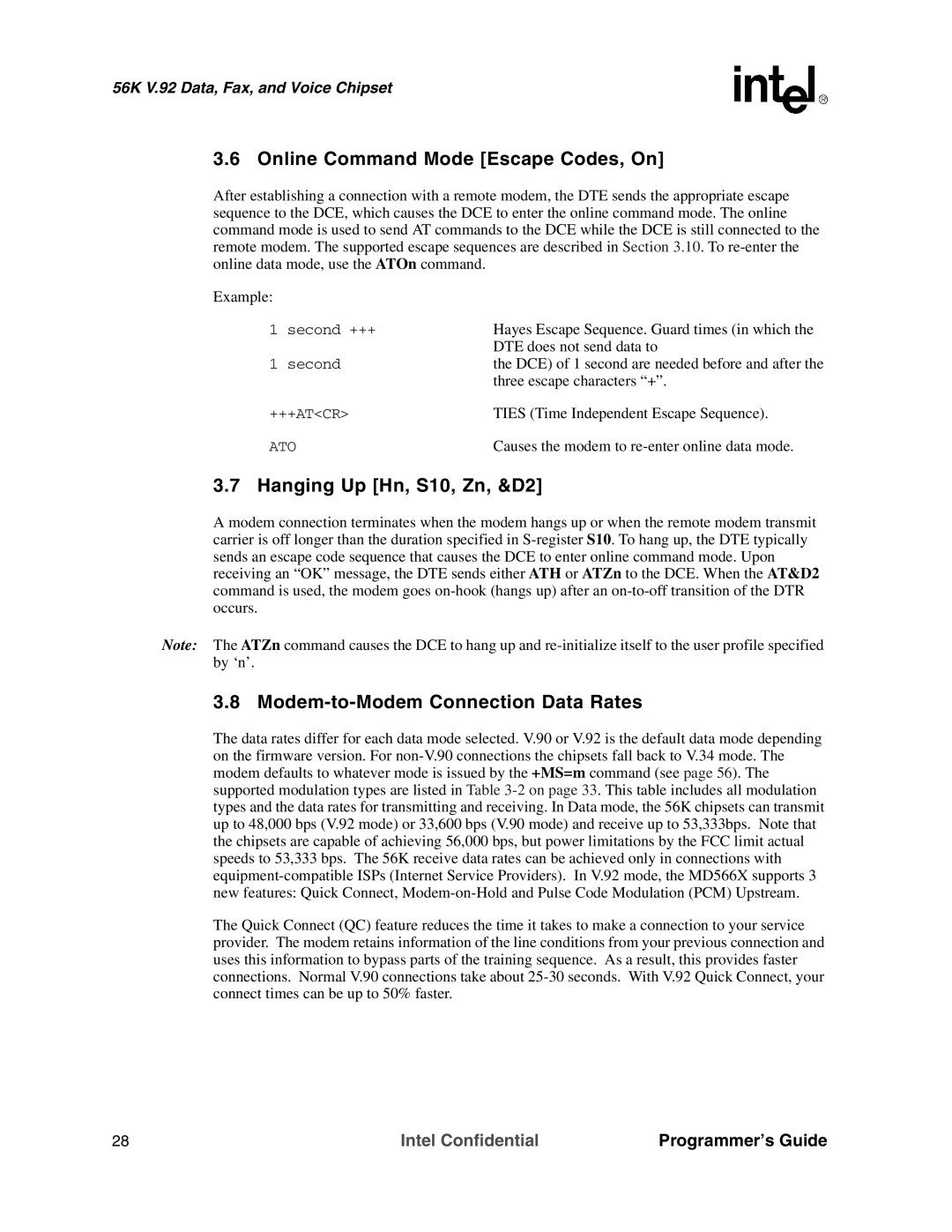56K V.92 Data, Fax, and Voice Chipset
3.6 Online Command Mode [Escape Codes, On]
After establishing a connection with a remote modem, the DTE sends the appropriate escape sequence to the DCE, which causes the DCE to enter the online command mode. The online command mode is used to send AT commands to the DCE while the DCE is still connected to the remote modem. The supported escape sequences are described in Section 3.10. To
Example: |
|
|
1 | second +++ | Hayes Escape Sequence. Guard times (in which the |
|
| DTE does not send data to |
1 | second | the DCE) of 1 second are needed before and after the |
|
| three escape characters “+”. |
+++AT<CR> | TIES (Time Independent Escape Sequence). | |
ATO | Causes the modem to | |
3.7 Hanging Up [Hn, S10, Zn, &D2]
A modem connection terminates when the modem hangs up or when the remote modem transmit carrier is off longer than the duration specified in
Note: The ATZn command causes the DCE to hang up and
3.8 Modem-to-Modem Connection Data Rates
The data rates differ for each data mode selected. V.90 or V.92 is the default data mode depending on the firmware version. For
The Quick Connect (QC) feature reduces the time it takes to make a connection to your service provider. The modem retains information of the line conditions from your previous connection and uses this information to bypass parts of the training sequence. As a result, this provides faster connections. Normal V.90 connections take about
28 | Intel Confidential | Programmer’s Guide |
